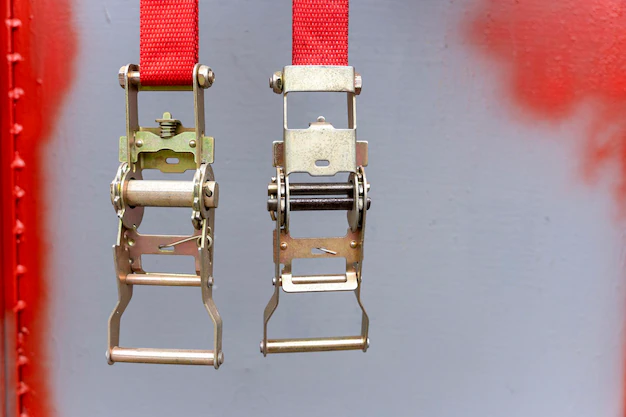A ratchet strap is an important tool for any mechanic. It is used to secure parts and pieces of a car so that they do not move during repairs. Setting up a ratchet strap properly is essential to ensuring a successful repair job. Follow these steps to properly set up your ratchet strap.

Assess And Prepare
The ratchet strap should be long enough for the job. Measure the length of the part that needs to be secured, then add an extra foot or two just to make sure it’s secure. Make sure there are no sharp edges, loose threads, or frayed ends on the strap. Check both ends of the strap. If necessary, cut off any excess material at both ends to ensure a clean fit.
Insert Hooks
Most ratchet straps have S-hooks attached at each end that can be inserted into grommets or other latching points in order to keep the strap secure. Before inserting a hook, check how much slack is needed in the strap. Too much slack can cause the ratchet to loosen and fall off, so make sure it’s tight enough. Insert the hooks into their respective holes, leaving enough room for the excess material to be folded over and tucked in.
Tighten Strap
Once the hooks are in place, use a ratchet handle to tighten the strap. Rotate the handle clockwise until the strap is secure but not too tight. Make sure there are no gaps or bulges that could slip out of place when tightened. It is also important to ensure that all four corners of the part being secured have been firmly gripped by the straps.
Secure Hooks
Secure both ends of each hook with a cable tie or other fastening mechanism. This will ensure that the ratchet strap stays in place and is not accidentally dropped during repairs.
Double Check
Before beginning repairs, double-check that all four corners of the part being secured are firmly held by the straps. If any areas appear unsafe, adjust the tightening of the strap to make sure it is secure before proceeding with repairs.
Follow these steps to properly set up your ratchet strap for any repair job. Properly setting up a ratchet strap can help to ensure a successful repair job and prevent accidents from occurring while working on vehicles. Make sure to inspect and prepare each ratchet strap prior to use, insert hooks correctly, and tighten straps until
How To Set Up A Ratchet Strap For Securing Cargo
Setting up a ratchet strap for cargo is an important task that should not be taken lightly. By following these simple steps, you can ensure that your cargo is safely secured and will not move during transport.

The first step is to check for any damage or wear on the ratchet strap and replace it if necessary. A damaged strap can be dangerous and cause your cargo to become loose during transport, which could lead to an accident.
Next, you should measure how much length of the ratchet strap is needed in order to properly secure your cargo. This can vary depending on how large your load is and how much tension will be required. Once you have a good measurement, cut off any excess length that won’t be needed and use the remaining portion of the strap in the next steps.
The third step requires you to attach one end of the ratchet strap around part of your cargo that won’t move like a post or a beam. Make sure that the strap is secure and won’t become loose during transport.
The fourth step involves attaching the free end of the ratchet strap to your vehicle in an area with good support such as the bumper or frame. Then, you can use the ratchet mechanism on the strap to adjust how much tension is needed for your cargo. Always make sure that enough tension is applied to keep everything in place but not so tight that it causes any damage or wears out quickly.
Once this process is complete, you should check all connections once more to make sure they are secure before transporting your cargo. By following these steps and using quality ratchet straps, you will be able to safely transport any load without any worries.
Conclusion:
Setting up a ratchet strap correctly is essential for any mechanic wanting to perform a successful repair job. By following these simple steps, you can be sure that your next repair job will go off without a hitch! Thanks for reading and happy repairing!
You May Also Like The Following:
